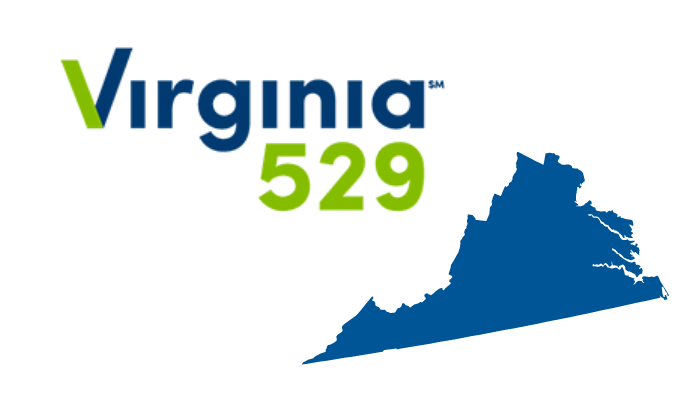6 Things You May Not Know About 529 Plans
529 plans are one of the most popular ways to save for college expenses. A 529 plan is a state-sponsored, tax-advantaged savings plan that is used to pay for qualified education expenses such as tuition, books, and other costs required for a student to enroll. Contributions into a 529 plan are able to grow tax-deferred, and any funds used from a 529 plan to pay for qualified education expenses are distributed tax free.
Despite 529 plans being the most popular college savings vehicle, there are various characteristics of 529 plans that are lesser known to many individuals and families. Here are 6 things you may not know about 529 plans:
1. A 529 plan isn’t just for college expenses.
It is a common misconception that 529 plans can only be used for college education expenses. While this is still the most popular use of 529 plans, funds can also be used to cover tuition and expenses for the following:
- Private elementary or secondary school tuition up to $10,000 per year
- Eligible vocational, trade, and technical schools
- Student loans payments up to $10,000 per beneficiary (lifetime limit)
The programs listed above must meet certain requirements to utilize 529 plans. To ensure a student is attending a qualifying institution, we recommend checking the eligibility with the admissions office or using the Federal School Code Lookup.
2. Anyone can open and contribute to a 529 plan.
Many people are under the impression that 529 plans must be owned by a parent or guardian, and that the owners are the only ones who can contribute directly to the plan. However, anyone can open a 529 plan and choose to list anyone they desire as a beneficiary. The owner of a 529 plan can even decide to list themselves as the beneficiary.
It is possible for anyone to contribute to any 529 plan, even if they aren’t the owner of the account. This means friends, family members, or any loved ones are able to make contributions. One thing to keep in mind, however, is that contributions over the annual exclusion amount for gifts, which in 2023 is $17,000 per person ($34,000 per married couple), will be reported as a gift on your tax return and lower your lifetime exemption amount.
It’s important to note that 529 plan ownership and beneficiary structure can affect tax benefits, which will be addressed in the sections below.
3. Certain states provide tax advantages for 529 plans.
More than half of US states, including the District of Columbia, offer a state income tax deduction or credit for contributions into a 529 plan. The deduction amount, and any rules or stipulations around deductions, differs from state to state. In most states, to qualify for a deduction, the taxpayer contributing must be the owner of the account and must be a resident of the state plan they are contributing to. However, some states offer a tax deduction for contributions to any 529 plan.
Since Cassaday & Company is located in Virginia, let’s look at Virginia as an example. A Virginia resident who owns a 529 plan can deduct up to $4,000 per year per beneficiary. If a Virginia 529 plan owner is 70 or older, however, they may deduct the entire amount contributed to a Virginia sponsored 529 account.
4. Distributions from grandparent-owned 529 plans will no longer affect financial aid eligibility on the FAFSA (Free Application for Student Aid).
In previous years, distributions from grandparent-owned 529 plans to pay for college education expenses would be reported as income to the student and could reduce financial aid eligibility by as much as 50%. For example, if a grandparent wanted to pay $15,000 of their grandchild’s college tuition from a 529 plan, that amount would be reported as income, and the student’s aid eligibility would be reduced by 50%, or $7,500.
As of the 2023-2024 school year, this is no longer in effect for schools that use the FAFSA to determine financial aid eligibility. It is important to note that schools using the CSS Profile, a supplemental aid form mostly used for private and more expensive public schools, will still consider income from grandparent 529 plans for aid purposes.
5. A 529 plan may be rolled over to a Roth IRA.
Starting on Jan. 1, 2024, leftover funds in a 529 account can be rolled into a Roth IRA for the beneficiary without penalty. While this is a remarkable opportunity to benefit from surplus 529 balances, there are a few caveats that investors should be aware of:
- The 529 plan must have been open for at least 15 years.
- The maximum lifetime amount that can be moved from a 529 plan to a Roth IRA is $35,000.
- Annual Roth IRA contribution limits still apply. The annual contribution limit in 2023 is the lesser of $6,500 or the owner’s earned income. So even though the cap on total contributions from a 529 plan to a Roth IRA is $35,000, this will need to be made over multiple years to stay under the existing Roth IRA contribution limits (Forbes – 529 to Roth IRA). While traditional Roth IRA contributions are susceptible to income limits, contributions from 529 plans to Roth IRAs are not.
- Contributions made to a 529 plan within the last five years are not eligible to be moved into a Roth IRA.
To qualify, each rollover transfer must be handled by the 529 plan administrator and sent directly to the Roth IRA custodian.
6. Some states hold contests and various incentives during the month of May to promote awareness and interest in 529 plans.
May 29th is National 529 Day (also called 529 College Savings Day) – a day created to raise awareness about the value of planning and saving for higher education expenses.
As part of this campaign, many states offer unique opportunities to increase interest in opening and funding a 529 plan in their state during the month of May. Specific state-sponsored promotions can be found here.
Education Planning is an important piece to your holistic financial picture. Saving for education expenses may feel like a difficult task, but opening a 529 plan for a child, grandchild, relative, or even a friend is a great way to help finance future expenses. It is never too late to open and fund a 529 plan to help make an education more affordable.
If you have questions or would like more information on how 529 plans can benefit you or your family, please contact your advisor. We are always happy to talk to you about maximizing your opportunities for paying for college and helping put a child on the path towards success. If you are not yet a Cassaday & Company client, we are happy to offer a complimentary, no-pressure evaluation of your current financial plan and goals. Please contact us at info@cassaday.com or (703) 506-8200.
Disclosures: Facts presented have been obtained from sources believed to be reliable. Before buying a 529 plan, you should inquire about the particular plan and its fees and expenses. You should also consider that certain states offer tax benefits and fee savings to in-state residents. Whether a state tax deduction and/or application fee savings are available depends on your state of residence. Cassaday and Company, nor its Investment Advisor Representatives may offer or provide accounting or tax advice. For tax advice, consult your tax professional. Non-qualifying distribution earnings are taxable and subject to a 10% tax penalty.



